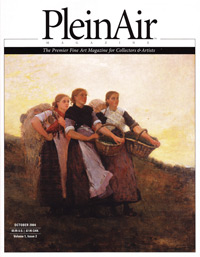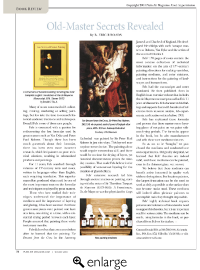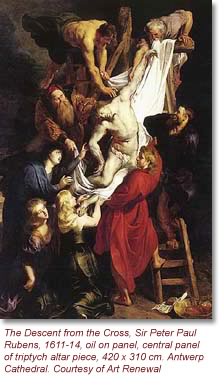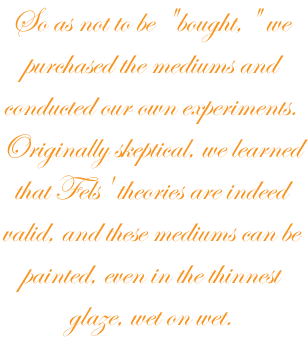Plein Air Magazine
"This superhuman effort produced what could be one of the most important texts on the formulas and techniques employed by great masters." |
 |
Old Master Secrets revealed
by B. Eric Rhoads
Many of us are consumed with collecting, creating, marketing or selling paintings, but few take the time to research historical academic traditions and techniques. Donald Fels is one of those rare people.
Fels is consumed with a passion for rediscovering the lost formulas used by great masters such as Van Dyke and Peter Paul Rubens. Though there has been much guesswork about their formulas, there has been even more incorrect research, which led painters to poor technical solutions, resulting in substandard products and paintings.
For 11 years, Fels searched through volumes of 17th-century texts and notes, written in languages other than English, each requiring translation. This superhuman effort produced what could be one of the most important texts on the formulas and techniques employed by great masters.
Those who have studied their techniques understand the importance of mediums and the importance of layering and glazing. It has been assumed that these great masterpieces were painted one layer at a time, one sitting at a time, with a substantial drying period between each layer. People assumed that painting these works took many months.
Fels did not buy that common wisdom after he learned that the painting The Descent from the Cross in the Antwerp Cathedral was painted by Sir Peter Paul Rubens in just nine days.
|
 |
|
This layered masterpiece towers in size. The painting alone would require tremendous skill, and there would be no time for drying of layers, yet historical documentation proves the nine day creation. That made Fels believe in the possibility of wet-over-wet layering for the creation of glazed effects.Fels' extensive research led him through ancient treatises on painting, starting with the notes of Sir Theodore Turquet de Mayerne (1573-1655).
A Frenchman, Dr. de Mayerne was the physician for kings James I and Charles I of England. He developed friendships with such baroque masters as Rubens, Van Dyke and the artists of the court of Charles I.
Fels' 170 pages of notes contain the most concise collection of technical information on the arts of 17th-century painting: directions for making varnishes, painting mediums, and color mixtures, and instructions for the painting of landscapes and human form.
Fels had the manuscripts and notes translated. He then published them in
English in an extensive volume that includes the de Mayerne manuscript
as well as Fels' 11 years of discoveries. Fels documents his findings
and supports them with hundreds of references from museum analysis, lab
experiments, and treatises written before 1700.
|
 |
 |
Fels has replicated these formulas and proven that these masters were layering glazes of wet paint on wet paint without drying periods. The formulas appear in the book, but he also manufacturers and sells these rare medium mixtures.
So as not to be "bought," we purchased the mediums and conducted our own experiments. Originally skeptical, we learned that Fels' theories are indeed valid, and these mediums can be painted, even in the thinnest glaze, wet on wet.
We believe that these mediums can benefit artists interested in quality work without drying times. For location painters, the largest frustration can be the need to work as drily as possible so the surface does not become moist mud. These mediums will indeed allow plein-air painters to accomplish tasks they thought impossible.
|
| Fels' highly technical book requires patience and tolerance of his extensive need to support his theories, but it is an important read for serious artists. The mediums can be made, using formulas in the book, or purchased from Fels or his dealers. |
This review originally appeared in the October 2004 issue of Plein Air Magazine. Reprinted with permission. |
|
|
